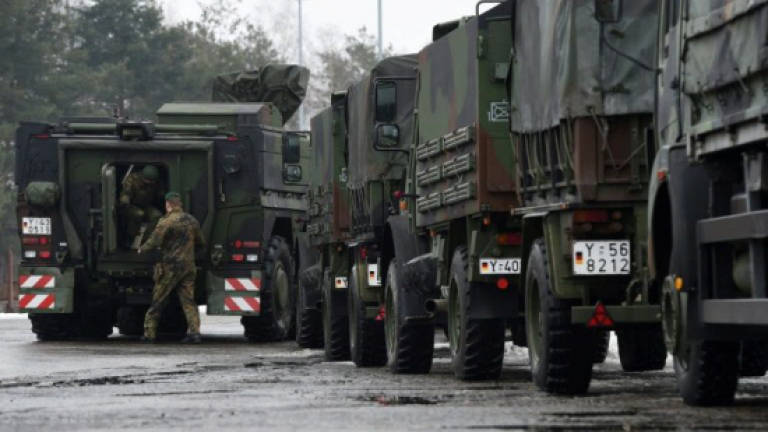EU tackles tank transport troubles in face of Russia threat

BRUSSELS: EU to make it easier to move troops, tanks in face of Russia threat
The EU will on Wednesday present detailed plans to make it easier to move troops and equipment around the bloc as Europe seeks to boost its defences in the face of the growing threat from Russia.
Officials want to create a "military Schengen zone" similar to the EU's civilian passport-free travel area by simplifying customs checks and bureaucracy that currently cause hold-ups for NATO forces and vehicles trying to cross borders.
Top NATO commanders say the changes are essential if Europe is to have a serious deterrent to potential Russian aggression, warning that cumbersome checks are hampering their ability to move resources quickly.
The European Commission, the bloc's executive arm, will present an action plan for reducing bureaucratic hurdles and improving infrastructure to make sure roads and bridges are able to carry heavy military equipment.
Tensions with Moscow have been high since the Ukraine crisis and Kremlin's annexation of Crimea in 2014 and the current diplomatic spat over the nerve agent attack on a former Russian spy in Britain has done nothing to calm matters.
"There is a practical dimension to these proposals, but the end purpose is obvious as soon as tensions rise with Russia," a European diplomat said.
Another warned that "we can no longer say that conflict in Europe is impossible".
US General Ben Hodges, commander of US ground forces in Europe at the time, in Oct last year said that to create an effective deterrent to Moscow, NATO needed to move forces "as quick or quicker than Russian Federation forces".
"What we have called for is something similar to a military Schengen zone. To have that same sort of freedom of movement a truck full of Polish apples has," Hodges said.
Erratic delays
The Baltic states of Estonia, Latvia and Lithuania, annexed and ruled by the Soviet Union for decades and deeply aware of the threat from their giant neighbour, have already created a military mini-Schengen among themselves, Elisabeth Braw of the Atlantic Council think tank said.
NATO has deployed around 4,000 troops along with tanks and artillery in Poland and the Baltic countries — the biggest reinforcement in Eastern Europe since the end of the Cold War — both as a sign of determination and to be ready in the event a crisis erupts.
Elsewhere the pattern is erratic. Some countries have streamlined procedures for moving vehicles and dangerous goods such as ammunition, others not.
"If you want to take a military truck with general cargo into Italy you only have to give 48 hours notification, whereas in other countries you have to give up to 14 working days," Braw told AFP.
"If you want to travel through Italy you'll get to where you need to go very fast but if you want to travel through the Czech Republic you'll be waiting."
In some cases, military convoys have to be registered months in advance in exacting detail, down to number plates and drivers' names, severely restricting commanders' ability to adapt their plans.
Roads, bridges, tunnels
While troops can be moved by air, moving an armoured brigade's worth of tanks needs roads and railways and other infrastructure.
Under the action plan, the EU will determine which parts of the continent's transport network are suitable for military vehicles and which need upgrading. Dedicated EU funding could be devoted to projects that can be used for both civilian and military purposes.
"We need to make sure the necessary infrastructure exists — the tunnels are passable, the roads are wide enough and the bridges can carry the weight of the equipment," a diplomat explained.
After the end of the Cold War, the need for military movement around Europe declined as there was no longer thought to be a danger of invasion, but the events in Crimea and Ukraine in 2014 once again brought the threat from the east back into sharp focus.
"We need to focus on territorial defence again — we can have all the equipment in the world but if it can't travel to where it needs to go efficiently it's absolutely useless," Braw said. — AFP